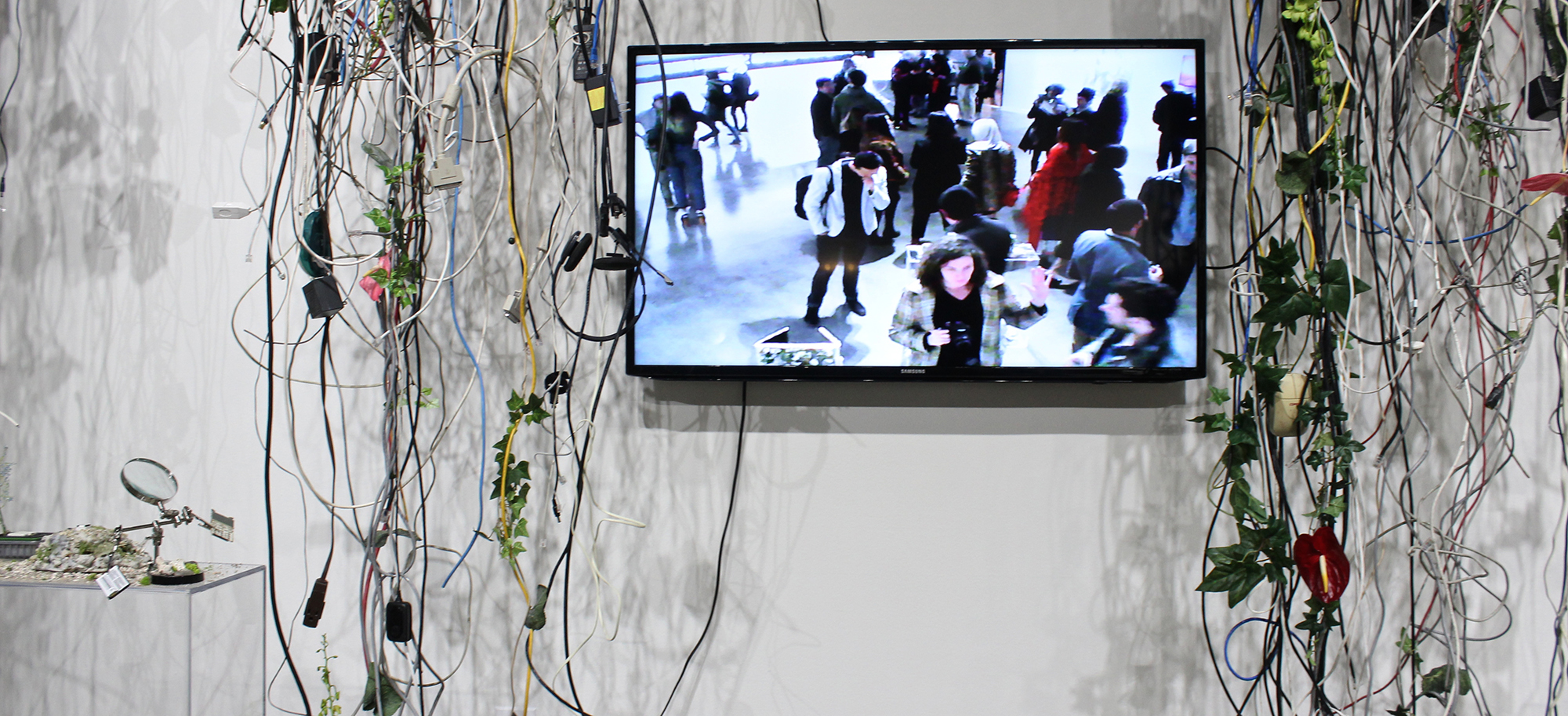
“Doubly So” at Center Galleries doubles down on themes of duality
Above: CCTV in Dessislava Terzieva’s installation, “Through the Glass Darkly” (2016).
Female identity is often an exercise in duality. Women are largely encouraged to present a seamless and appealing surface to the world, which can serve to mask the trials and tribulations of being subjugated to a range of indignities–from lower wages, to social discrimination, to outright human rights abuses. “Doubly So” opened March 19th and runs through April 23rd at Center Galleries (part of the College for Creative Studies campus, which received funding from Knight Arts). Organized by guest curator Samantha “Banks” Schefman of Playground Detroit, the four-person show brings together a field of strong emerging female artists, who individually and collectively present powerful imagery around the subject of double identities.
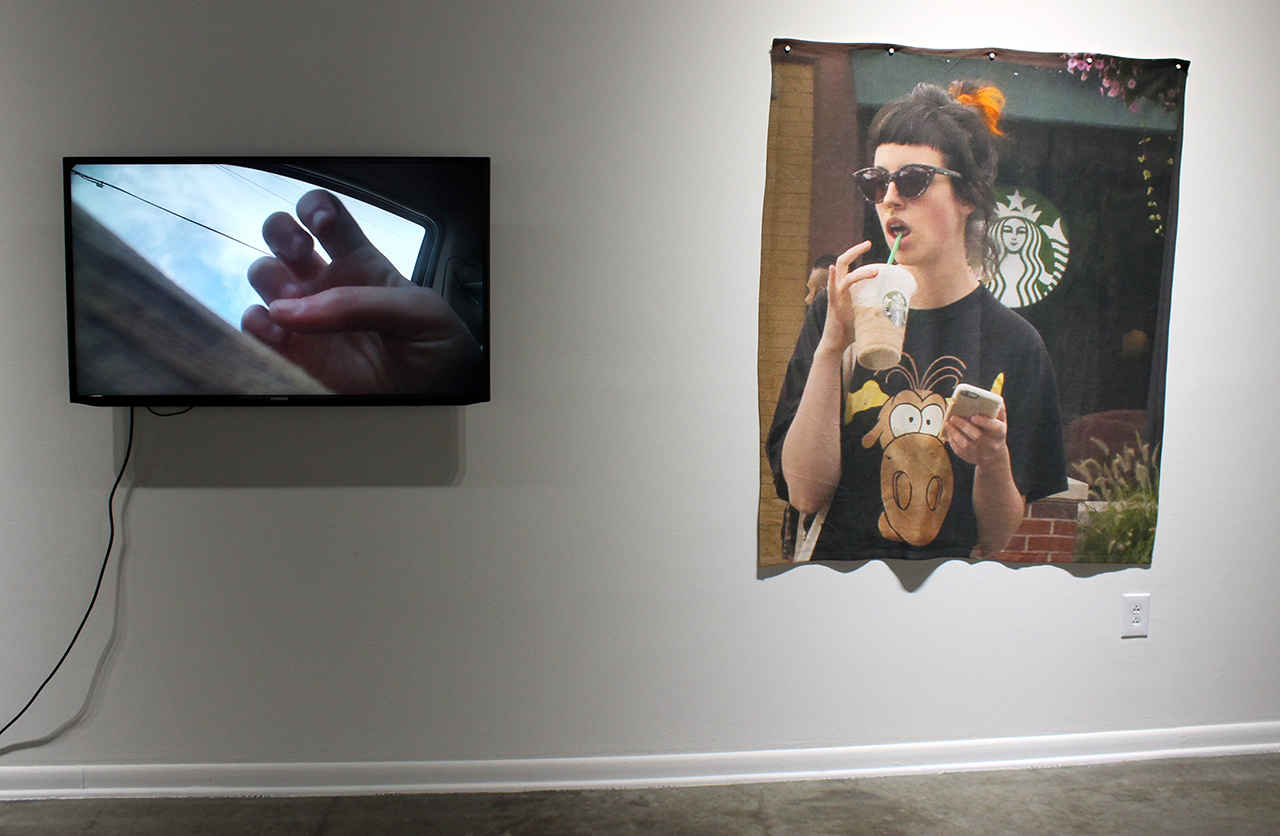
Molly Soda, “cater 2 u” (2016), single channel video, and Molly Soda, “Mary Kate” (2015), printed fleece blanket.
For many of these women, as is the case for young people in general, technology and social media play a major role in their interface with society and their audience–which presents another interpretation of the show’s “double” moniker. Platforms such as Instagram have enabled young women to seize the means of their own objectification, racking up masses of followers for their highly curated, highly performative web content.
Molly Soda is one such character, created by artist Amalia Soto at the age of 14 and cultivated through social media platforms such as Tumblr. Molly Soda has more than 50,000 followers on Instagram, and demonstrates the common tendency within her cohort to process previously personal or hidden struggles in a public realm. The works in “Doubly So” are her first works for a gallery setting–Soda has previously shown and disseminated imagery only in a digital/video realm–and she presents four large-scale images printed onto fleece blankets. The works depict the artist reenacting paparazzi-style photos as a stand-in for titular celebrities such as “Mary Kate,” “Rihanna” and “Demi.” Soda references pop-cultural signifiers in the same way that academic works pull from the art history canon, and her images suggest a closed-circuit conversation, as do the ivory towers of academia.
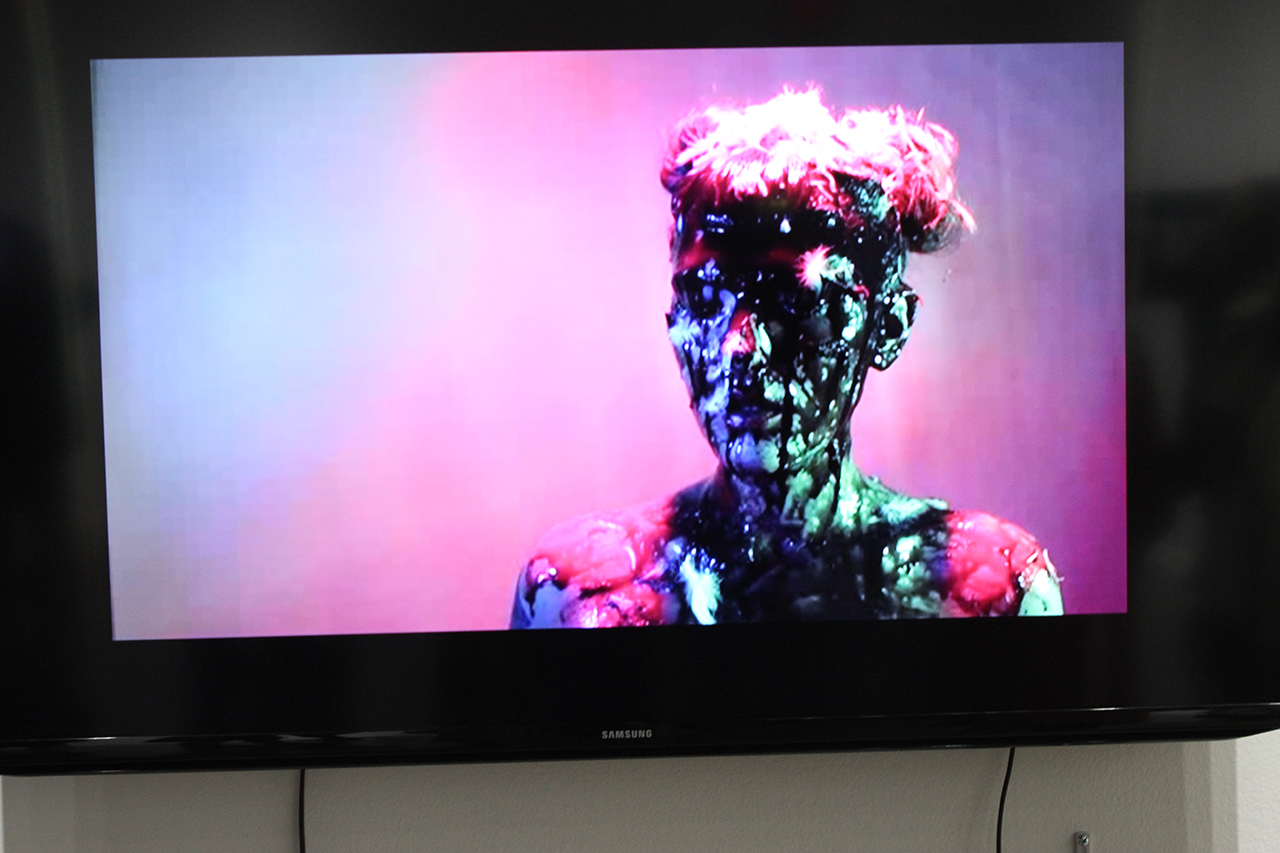
Sofia Szamosi, still from “Social Anxiety” (2015), digital video.
And yet, as curator Schefman points out, there is something broadly accessible about the Internet, and deeply human about Soda–and indeed, all the artists in the show. While the creation of an Internet persona generates an untouchable image, in some regards, it also enables people to connect to a wider community than that which is immediately available to them. The tension between private and public space is the polarity that energizes the work of Sofia Szamosi, who fills an entire wall with “10 Years of Photobooth Self Portraits” (2005-2015), her collection of the four-frame black-and-white photo series that are issued by public photobooths, and represent a dying medium in our increasingly digital culture.
Szamosi’s images chart her progression through time, as well as her efforts to express herself in momentary windows of opportunity–the progression of the photobooth mechanism allows for only seconds between each frame. In a sense, these are the most archaic forms of “selfies”–which have found their perfect milieu in the Internet, but clearly predated it by quite some time (in fact, I have some of my grandmother’s selfies, which would not look out of place beside Szamosi’s work). Digital videos on an adjacent wall accompany the photobooth collection, the most powerful of which, “Social Anxiety,” shows Szamosi undergoing a staged version of a tar-and-feathering process that leaves her covered in sticky feathers. Watching it, I am reminded of the great pressures on girls to present themselves in highly sexualized ways, only to have acts that are impulsive or ephemeral stick to them and stigmatize their existence. Though I am less than 10 years older than the artists in the show, I represent the final generation to be afforded a childhood outside the all-seeing eye of social media, and I cannot help but feel tremendous relief that there is not an extant record of my youthful indiscretions, such as they were.
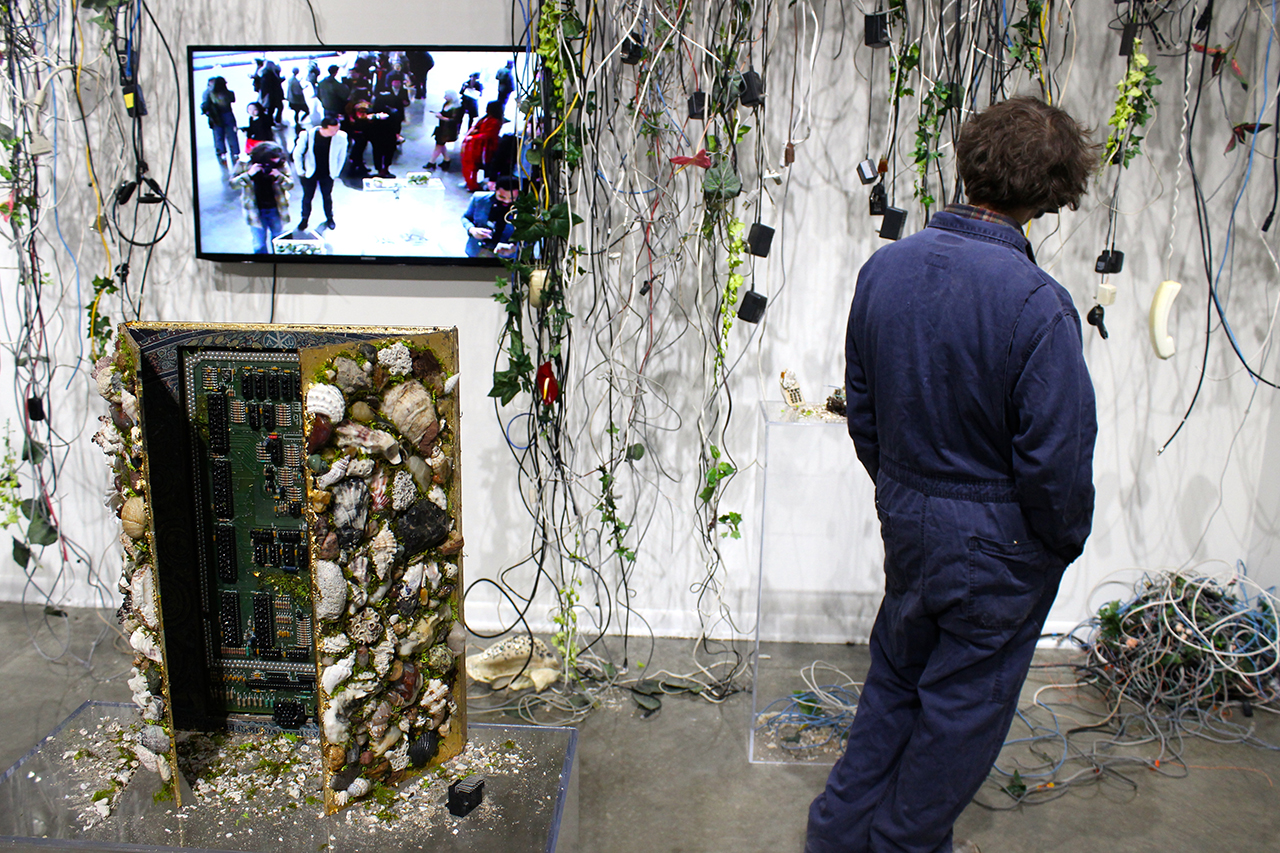
Dessislava Terzieva, “Through the Glass Darkly” (2016), installation view.
The idea of surveillance and proto-technology are the main features of an installation piece by recent Red Bull House of Art participant Dessislava Terzieva, which plays live footage from a closed circuit camera in the gallery through screens surrounded by wires, real and fake plant life, and assorted found devices. Display cases hold flip phones and other dead technology, covered in layers of natural materials such as shells, rocks and moss. Modern technology had sped up to the point of making even recent history feel archaic and obsolete; Terzieva consciously leverages a paleo-futuristic style, giving the scene a science fiction treatment. In one case, George Orwell’s “1984” is visible (the year predates the birth of any of the show’s participants), and it is an apt reference for a piece dealing with the omnipresence of surveillance and voluntary self-monitoring facilitated by the geo-located, tagged and constant data streams we feed into our ever-smarter devices.
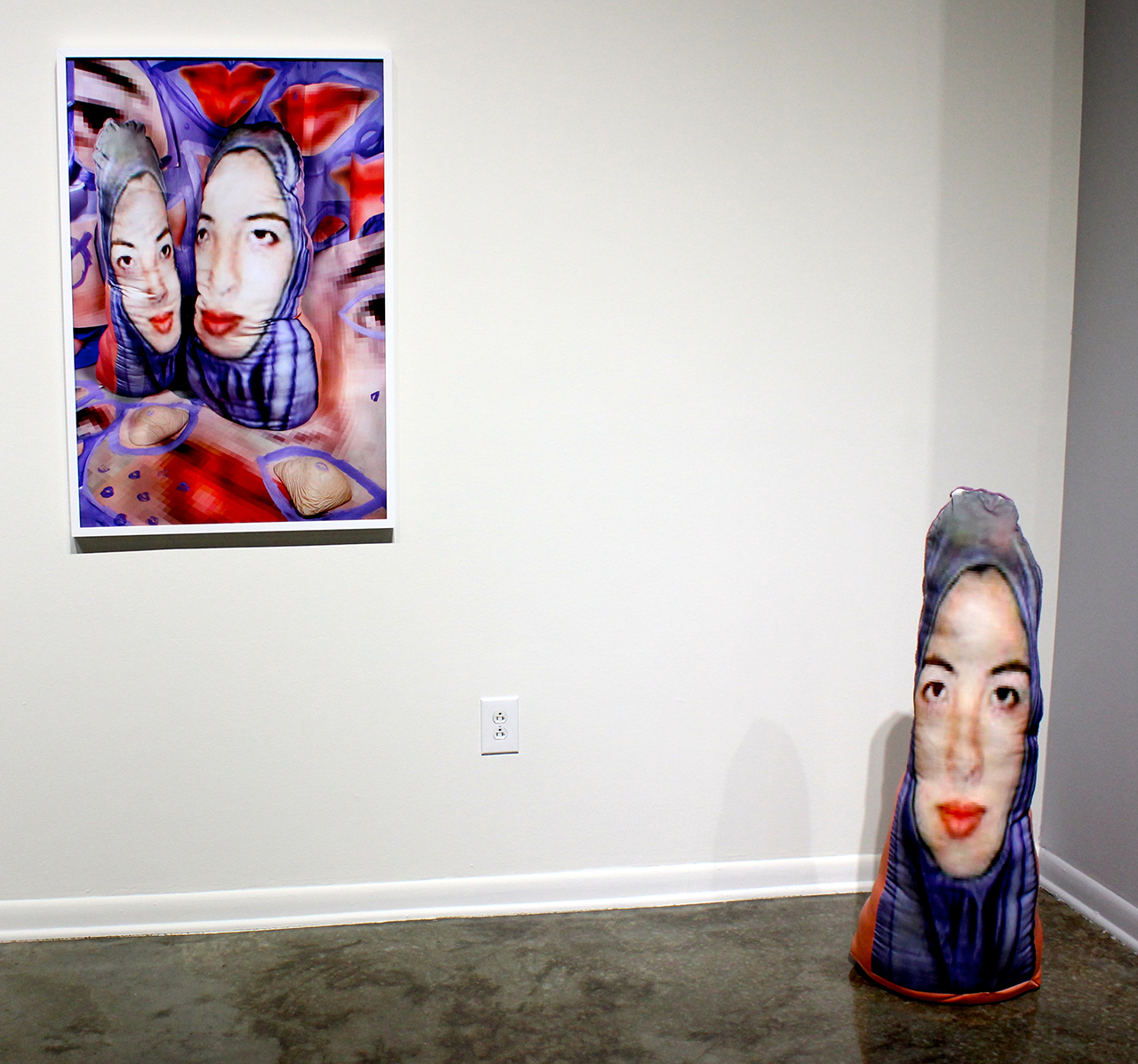
“Delara (2)” (2016), soft sculpture, archival pigment print with frame.
If Terzieva presents a world where everything is seen, then the neighboring set of works by Iranian-American artist Sheida Soleimani seeks to raise visibility of a largely invisible problem: that of the undocumented executions regularly perpetrated against women in her parents’ forfeited homeland of Iran. Scrying the Internet for information about these prisoners, Soleimani describes being able to find only the scarcest of images, sized for the web at 72 dpi, she tells me with a kind of horror. This would be a charmingly millennial concern, if it weren’t for the fact that Soleimani’s subjects are the victims of a violently patriarchal society governed by a system of Sharia law that executes more than 500 women a year, on the thinnest of pretenses and largely without due process. Soleimani’s work seeks to draw these women back into physical reality, creating dimensional soft sculptures that blow up what meager images she can find to larger-than-life sizes, and in doing so, acknowledge their cries for help–efforts that went mostly unacknowledged by anyone.
Say what you will about young women–and people have said it all–but it is undeniable that the four artists and the show’s curator represent a powerful perspective. “Doubly So” proves, if there was ever any doubt, that there is more to women than the sometimes simple, cheerful and shiny exteriors we are encouraged to cultivate. Look while you can: what you haven’t seen might really take your breath away.
Recent Content
-
Artsarticle ·
-
Artsarticle ·
-
Artsarticle ·

